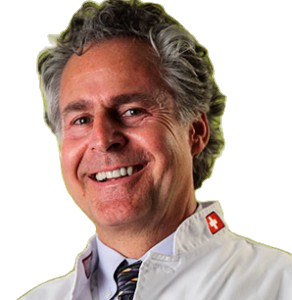 Dr. Herzog
Dr. Herzog Jan 1
Jan 1
What really is blood pressure?
The next read is an excerpt from "The Doctor's Book of Survival Home Remedies", Chapter: Blood Pressure, pages 67-68:

Try Googling 'high blood pressure' today and you'll likely get 830,000,000 hits like I just did. Now try 'low blood pressure'. The day I googled these, the number was 25,000,000 hits less. This difference reflects the attention most of society pays to high blood pressure, leading to hypertension. While the danger of hypertension can't be overstated, the same could be said of low blood pressure, or hypotension.
What really is blood pressure?
If you're like me, you grew up knowing blood pressure is an important measure. But do you know why? Other than having an abstract notion that it relates to your heart health, do you actually know what a blood pressure reading indicates?
Blood pressure is a measure of how hard your heart is working, and it's twofold. When your heart beats, it creates a force that pushes the blood against your blood vessel walls as it flows through them. 'Systolic' blood pressure - the top number in a reading - shows the force or pressure of the blood when the heart contracts.
High blood pressure, then, is when your blood pushes against the walls of your arteries with force that is consistently too high. According to the College of Cardiology/American Heart Association, 130/80 hg. signals hypertension.
The other type of blood pressure is 'diastolic' - the bottom number in a reading - and shows the force or pressure of the blood when the heart is at rest. It measures the pressure in your arteries between heart beats (when your heart's at rest.)
A relevant term is diastole, which refers to the moment of relaxation between heart beats. Your coronary artery, significantly, is able to supply blood to your heart only at that time. So diastolic blood pressure reading is more important than you might realize.
Most physicians, and therefore patients, pay far more attention to systolic blood pressure than they do to diastolic blood pressure. But diastolic, the neglected blood pressure metric, is the main interest for cardiologist Jason Guichard. He has brought the relevance of the diastolic metric to the forefront with his research in recent years.
"Isolated diastolic hypotension" is when the diastolic blood pressure is too low (less than 60 Hg). At the same time, your systolic blood pressure is not too low (above 100 Hg).
In other words, the pressure in your arteries between heartbeats is too low, while the pressure of your blood pushing against the walls of your arteries is not too low.
What is the 'gold standard' in blood pressure?
In my book you'll find the 5 blood pressure categories and their corresponding levels, established by the American College of Cardiology/American Heart Association.
>>> GET THE BOOK TO DISCOVER THE FULL CHAPTER <<<
POSSIBLE COMPLICATIONS
Complications With High Blood Pressure (Hypertension)
High blood pressure can generally be treated. But left untreated it can be fatal. The first section below outlines why it's risky in pregnancy. Following this, the information applies to the general population.
Risk of Hypertension in Pregnancy
Preeclampsia is when the pregnant mother's blood pressure spikes. It can reduce the blood supply to the fetus, preventing the flow of adequate oxygen and nutrients to the growing baby.
Untreated preeclampsia becomes a condition called eclampsia. In extreme cases it can lead to seizures and coma. In such cases, babies may be born premature or worse yet-stillborn. Newborn premature babies would be at risk of developing long-term health conditions.
The mother, then, risks not only premature birth or losing her child altogether. She also risks organ damage, organ failure, or even stroke.
Symptoms of preeclamsia or eclampsia are high blood pressure, protein in urine, swollen hands and/or face, headache, problems with seeing, abdominal pain, seizures, nausea, and vomiting.
Heart and Arteries - Ground Zero
High blood pressure creates a force and friction too harsh for the delicate tissues inside the arteries. That brisk movement tears the inside of the artery walls.
This creates an environment that promotes plaque, which develops from 'bad' cholesterol (LDL). It settles in those tiny tears of the artery walls and hardens the arteries. This condition is also known as atherosclerosis.
Over time, untreated high blood pressure can complicate your health condition considerably. This is because the plaque and damaged artery walls increase over time, causing the inside of the arteries to get increasingly more narrow. Your blood pressure will raise progressively higher, and you'll have a vicious cycle destroying your health in no time.
Left untreated, high blood pressure makes your heart and blood vessels harder and less efficient than your system can tolerate. It gets harder for your heart to pump out blood into your body.
Your heart's response to its weakened pumping function is to grow more muscle. Called 'hypertrophy', this gives the heart more force to pump, or contract. The increased muscle mass, though, creates three further problems.
Coronary arteries get squashed, so that less blood gets through them to your tissue.
More oxygen is needed from your blood.
The heart can't supply the greater demand on it, contractions weaken even more, leading to systolic failure.
Heart Failure
Picture your heart for a minute. It has two chambers, known as ventricles. The ventricles fill up with blood, part of which pumps out into your body when your heart beats. This is called cardiac output.
Cardiac output is measured by the volume of blood pumped out of the heart over a 60-second period. If that's only a fraction of the volume the body needs on each heartbeat, the heart may fail.
When your heart beats, it contracts. That force pushes blood out from your heart. A healthy volume of blood getting pumped out is anywhere from seventy to fifty percent of the total volume in the ventricles. If only fifty to forty percent of the total volume of blood is pumped out, it's considered borderline. Below 40% signals systolic heart failure.
Damage to Your Brain
Certain food and other elements will increase your blood pressure, risking damage to the arteries that lead to your brain. Early on, it can reduce blood flow to your brain. Your brain, then, won't get enough oxygen and micronutrients, which can cause vascular dementia. In addition, high blood pressure can completely clog the arteries. It can also cause them to burst.
Further complications that typically develop include…
- Vision loss
- Heart attack or failure
- Kidney disease or failure
- Sexual dysfunction
Complications With Low Blood Pressure (Hypotension)
Blood pressure that is too low can interfere with your regular day to day life. It may cause dizziness every time you stand up from a laying or sitting position. That could mean your days of playing with pets, grandkids, or a golf partner could be over.
Low diastolic blood pressure, specifically, is not to be taken lightly. It can spiral down to new-onset heart failure... or, sadly, to death.
The problem with a diastolic reading lower than 60, particularly if you are middle aged to elderly, is that your heart isn't getting what it needs. To be more precise, it signals that your coronary artery is not getting enough blood and oxygen to your heart.
Heart failure
Diastolic heart failure is very different from systolic heart failure, when the heart doesn't squeeze hard enough. In diastolic heart failure, it squeezes hard enough but the ventricles - or heart chambers - don't fill up with enough blood. It's the outcome of an abnormal relaxation function of the heart.
- Four key points about diastolic heart failure are…
- A trigger causes your heart to work extra hard.
- Heart works so hard that its walls get thicker and tighter.
- Heart walls get so tight they cannot relax.
- Thickened walls take up excess space so the heart chambers can't fill up with enough blood. So the body doesn't get the volume of blood it needs.
So, while systolic and diastolic processes are clearly different, heart failure from both results from the same thing. The volume of blood pumping from the heart to the body is too low.
>>> GET THE BOOK TO DISCOVER THE FULL CHAPTER <<<
It is forbidden to replicate any of the above content without Dr. John Herzog's consent. However, in order to support the discounts and donations we're making, we depend on free advertising. The doctor needs your help in sharing this with the world.
Recent Posts

ANXIETY AND DEPRESSION - SYMPTOMS AND CAUSES

CARDIOVASCULAR ISSUES

TURMERIC - HOME REMEDIES MADE EASY

BAY LAUREL

CONDITIONS GARLIC CAN REMEDY

Isn't Arthritis An Old Folk's Disease?

HOLY BASIL

CONDITIONS GREEN TEA CAN REMEDY

Spirulina one of the most curative and prophylactic foods

VITAMIN C's IMPACT ON CANCER

PAIN MANAGEMENT - DIY TIPS

ALZHEIMER'S AND DEMENTIA

What really is blood pressure?

Producing Your Own Penicillin From Oranges